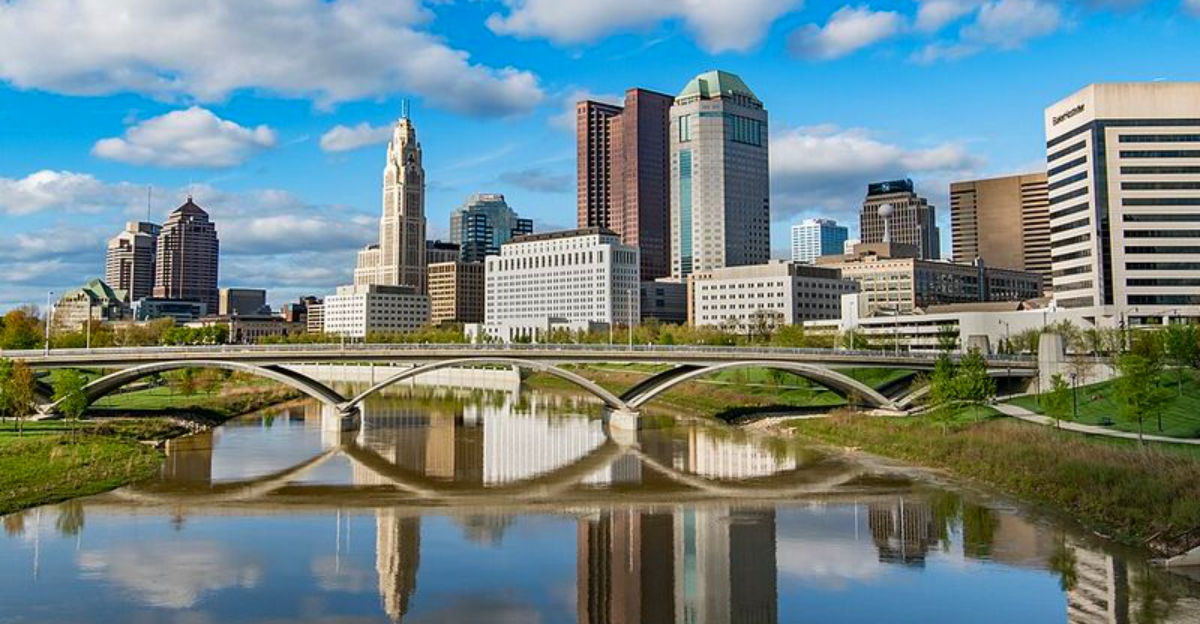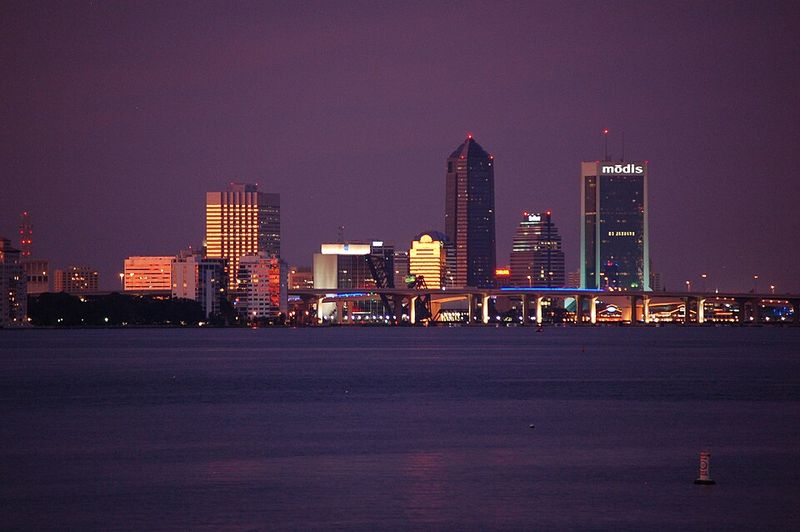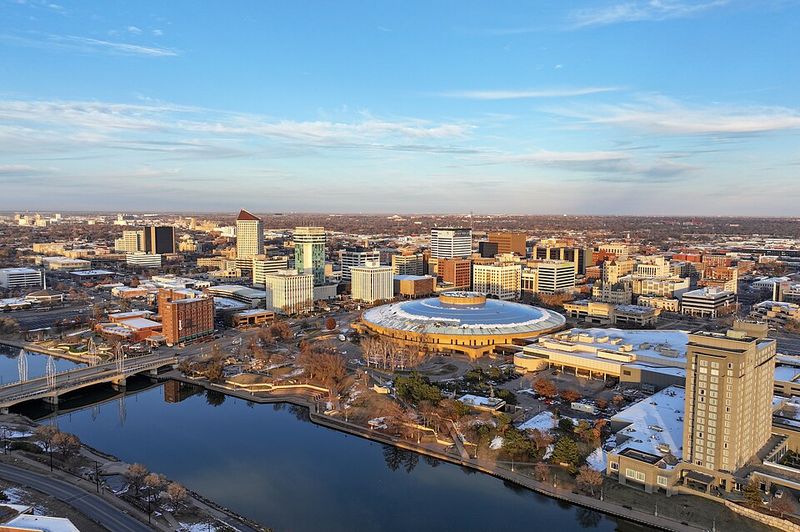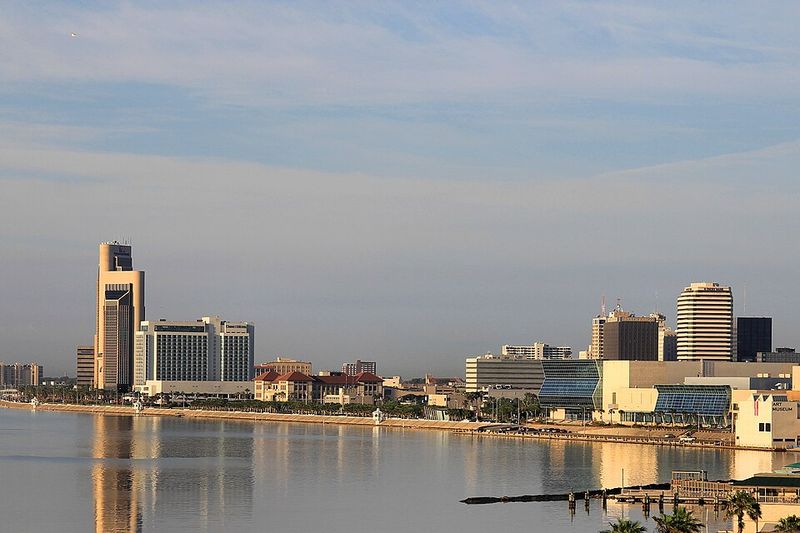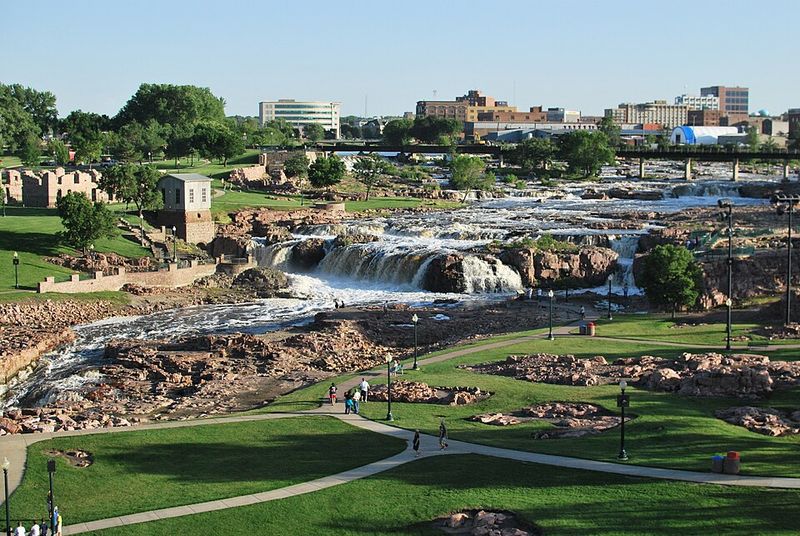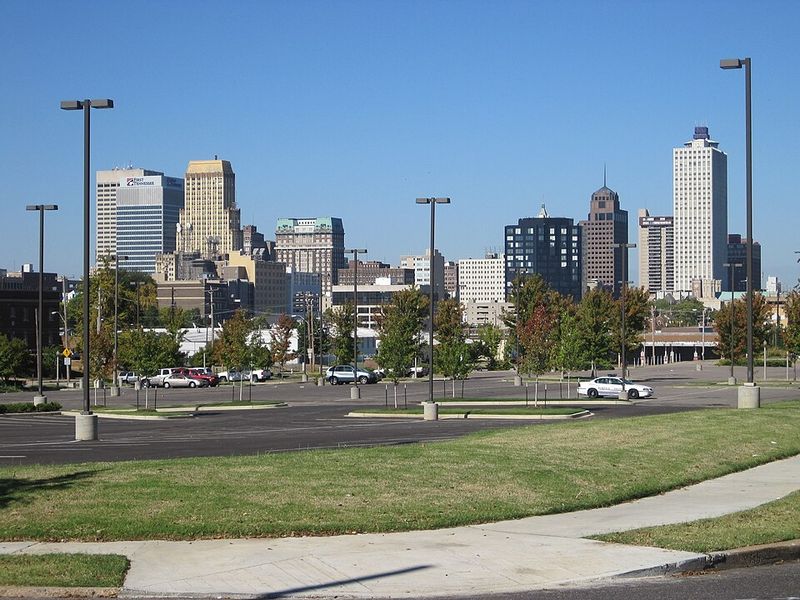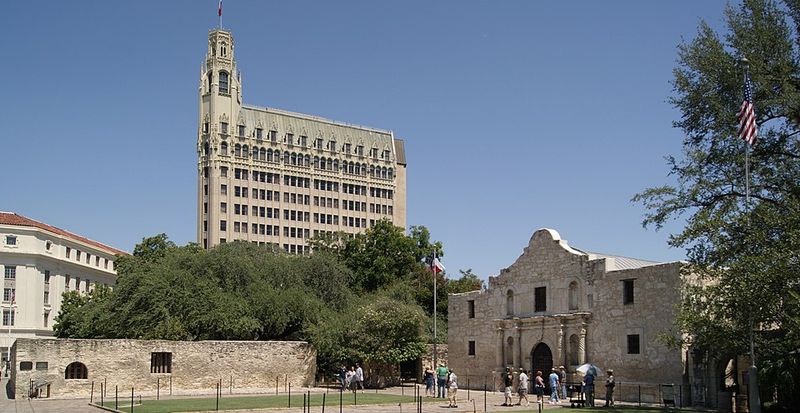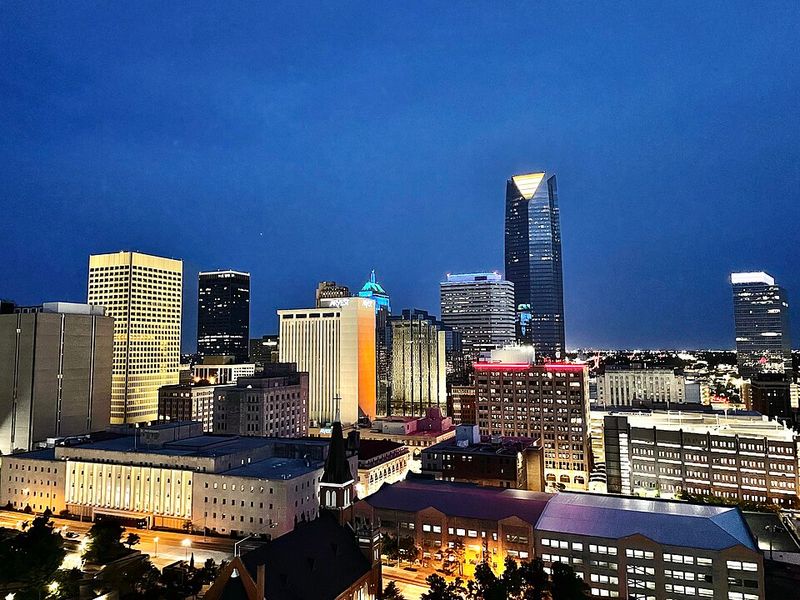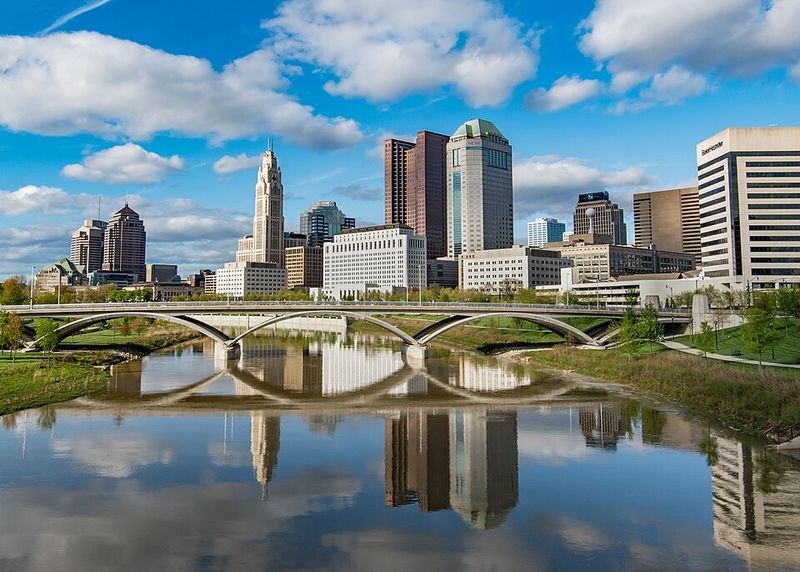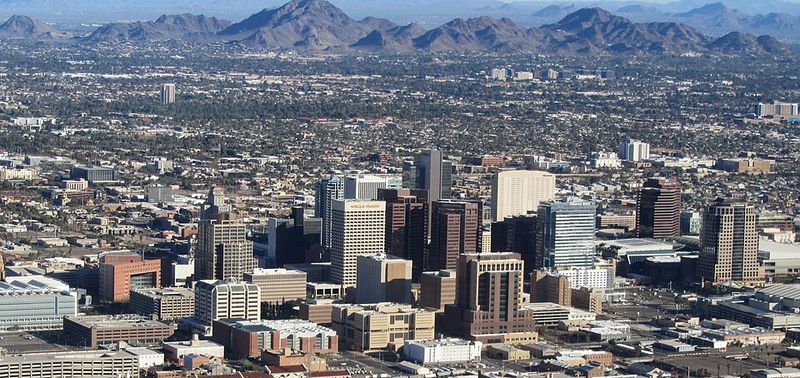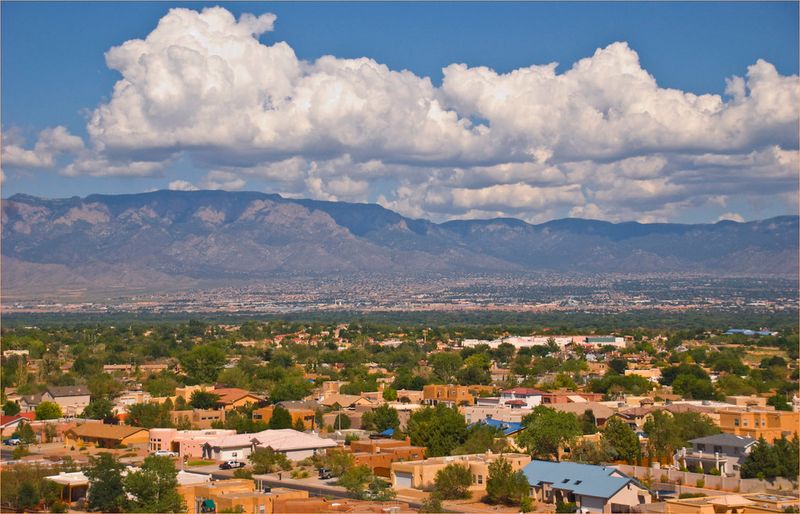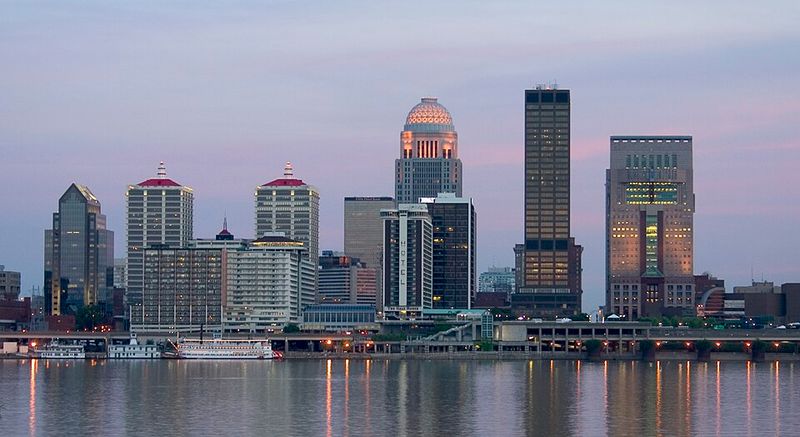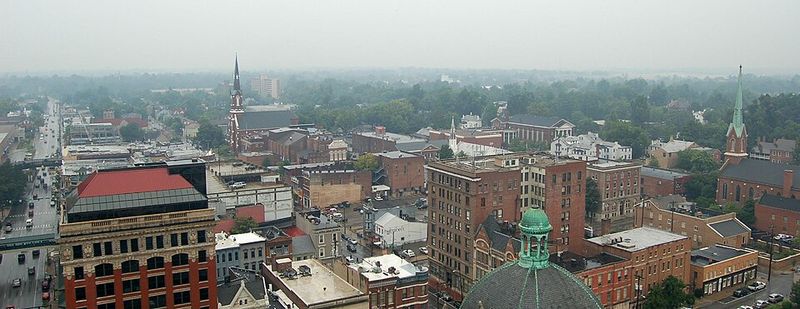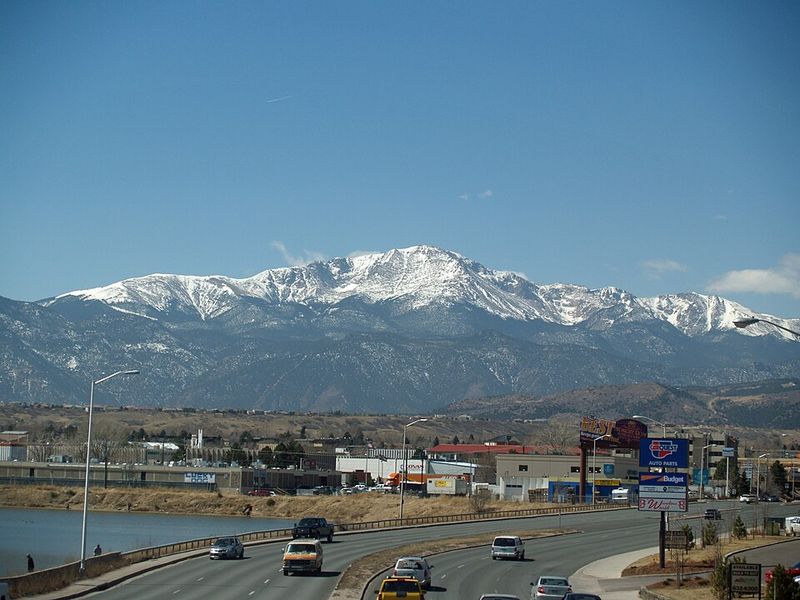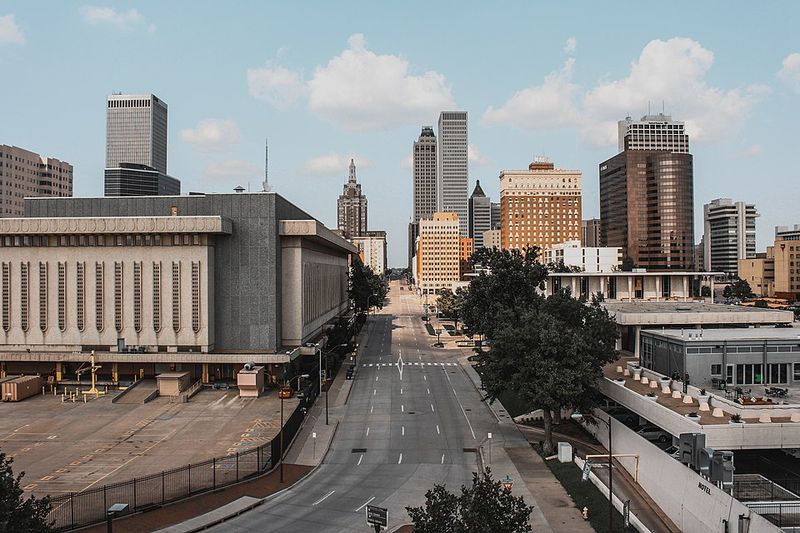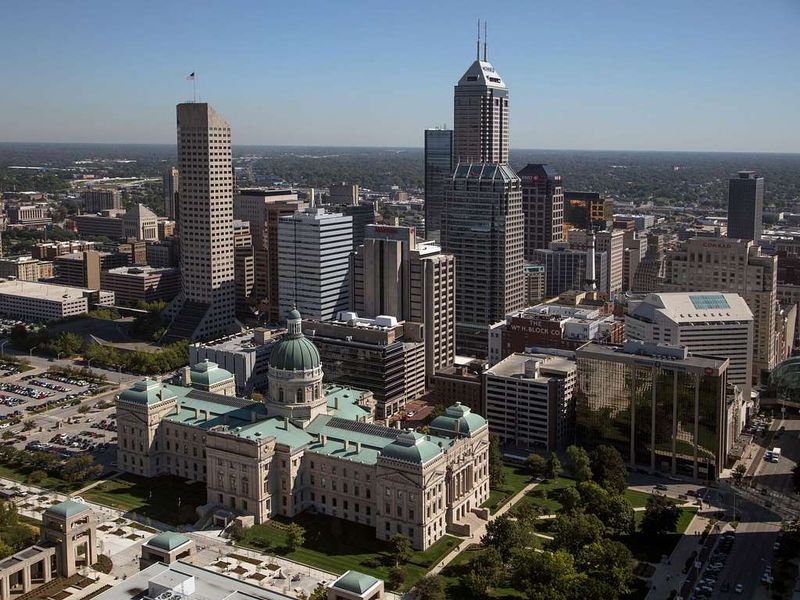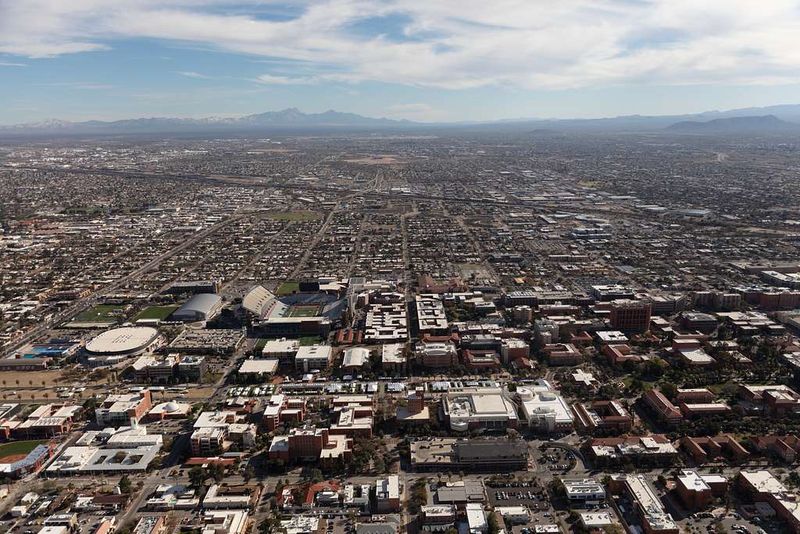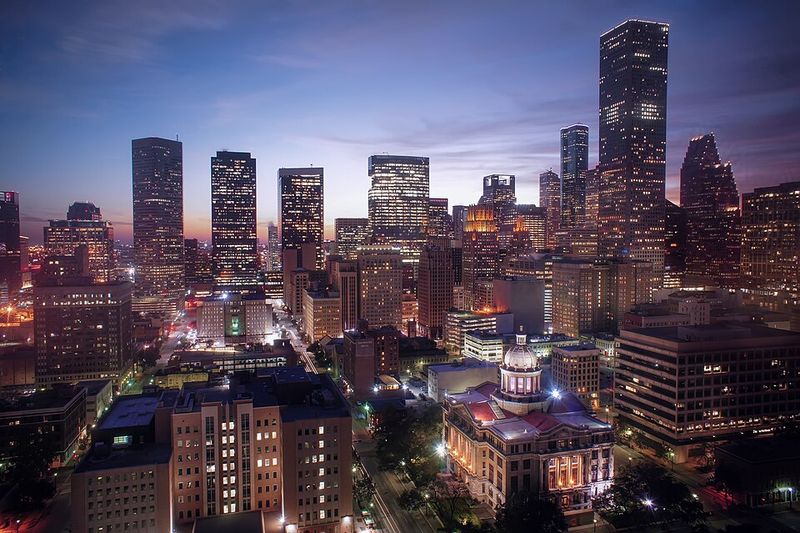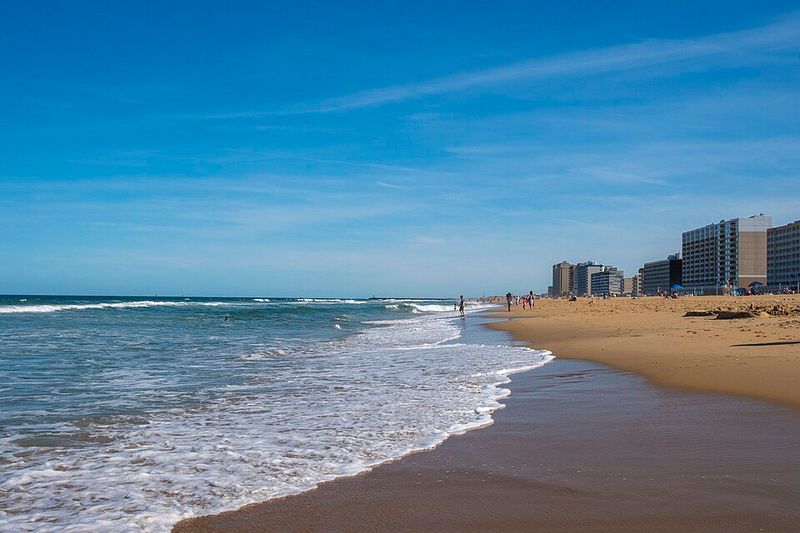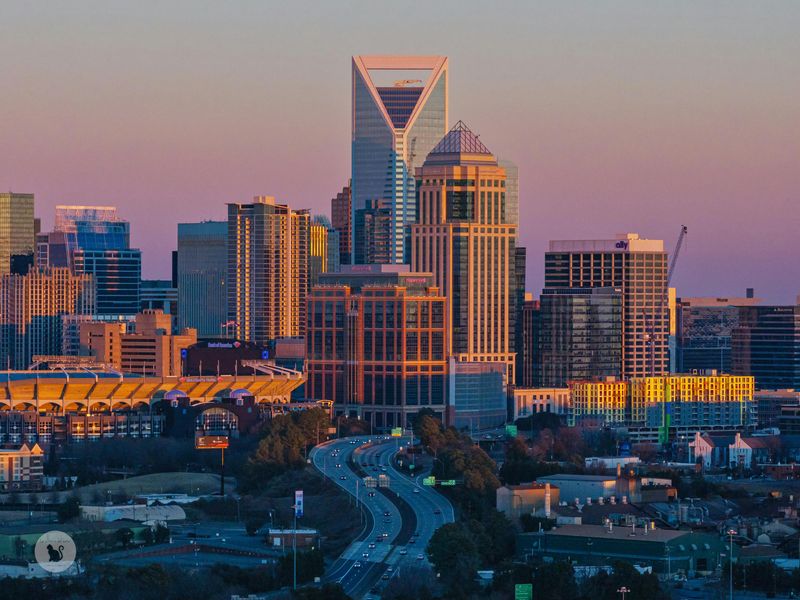Some cities get all the fame while others end up with a less exciting reputation. Travel studies recently revealed which American cities visitors find most boring based on nightlife options, restaurant variety, attractions, and entertainment venues. Before you write these places off completely, though, you might want to hear what hidden gems they actually offer beneath that sleepy surface.
1. Jacksonville, Florida
Florida’s largest city by area earned the top spot on the boring list with an excitement score of just 14.3 out of 100. Its massive size works against it because everything spreads out so much that neighborhoods feel disconnected and empty. About 54% of restaurants here are chain establishments, which means finding unique local eateries takes real effort.
The city also ranks among the lowest nationwide for nightclubs and concert venues per person. With such low population density across its sprawling territory, creating vibrant entertainment districts becomes nearly impossible. Still, the beaches remain beautiful and the riverside walks offer peaceful escapes if you know where to look for them in this sleepy giant.
2. Wichita, Kansas
Kansas’s largest city struggles with a dining scene dominated by familiar franchises. More than half of all restaurants belong to national chains, leaving food lovers disappointed when searching for culinary adventures. Only one restaurant has earned a prestigious culinary award in recent years, which tells you everything about the local food culture.
International visitors rarely make Wichita their destination, contributing to its isolated feeling. The city sits in the middle of the Great Plains with limited attractions that draw outsiders. Aviation history buffs might appreciate the aircraft heritage here, but most travelers pass through without stopping.
Local efforts to revitalize downtown continue, though progress moves slowly in this prairie metropolis.
3. Corpus Christi, Texas
This Gulf Coast city lacks award-winning restaurants entirely, which surprises many considering Texas’s rich food traditions. Sports fans find little to cheer about since it ranks in the bottom 15 for professional and collegiate teams. The attraction count per capita also lands in the bottom 10 nationally, meaning there simply aren’t many things competing for your attention.
The beaches exist but don’t match the postcard quality of other Texas coastal destinations. Visitors often describe the water as murky and the sand as unremarkable. Entertainment options close early, giving the city a ghost-town vibe after sunset.
Still, fishing enthusiasts appreciate the bay access and reasonable prices compared to flashier coastal towns.
4. Sioux Falls, South Dakota
Holding the record for the highest percentage of chain restaurants at 58%, Sioux Falls offers little culinary diversity or innovation. National franchises dominate every shopping district and highway exit, creating a monotonous dining landscape. Few professional sports teams call this place home, and major attractions per capita remain scarce compared to similarly sized cities.
The namesake waterfalls provide a pretty backdrop for photos but don’t require more than an hour to fully experience. Beyond that natural feature, entertainment options thin out quickly. Winters bring brutal cold that keeps people indoors for months, further limiting social activities.
The cost of living stays low, which attracts families seeking affordability over excitement in their daily lives.
5. Memphis, Tennessee
Despite birthing blues music and hosting Elvis’s Graceland mansion, Memphis scored surprisingly low for excitement. The city ranks poorly for hiking trails, green spaces, walkability, and annual festivals relative to its population size. Music heritage alone can’t overcome the lack of modern amenities that today’s travelers expect from urban destinations.
Many neighborhoods feel unsafe or neglected, discouraging visitors from exploring beyond tourist zones. Public transportation barely exists, forcing everyone into cars to reach scattered attractions. The famous barbecue tastes delicious but can’t sustain a weeklong visit by itself.
Cultural institutions like the Civil Rights Museum offer powerful experiences, yet they represent isolated bright spots in an otherwise sleepy landscape that struggles with its identity.
6. San Antonio, Texas
The Alamo stands as one of America’s most recognized landmarks, and the River Walk attracts millions yearly. Yet San Antonio ranked in the bottom 10 for every measurement related to nightlife, concerts, and special events. After visiting the mission and strolling the riverside shops, many travelers wonder what comes next in their itinerary.
Chain restaurants outnumber independent establishments even in tourist areas, creating a generic dining experience. Concert venues remain scarce for a city of this size, disappointing music lovers. The sprawling layout requires extensive driving between attractions, exhausting visitors who hoped to walk and explore.
Theme parks on the outskirts provide family fun, but the urban core itself lacks the energy found in other major Texas cities like Austin or Dallas.
7. Oklahoma City, Oklahoma
Parks and hiking trails rank among the worst nationally in Oklahoma City, disappointing outdoor enthusiasts. Approximately 53% of restaurants belong to chains, limiting culinary exploration to predictable menus. The city attracts the third-lowest rate of international tourists per capita, partly because few people outside the region know much about what it offers.
The Thunder basketball team provides entertainment during season, but options shrink dramatically in summer months. Downtown revitalization projects show promise but haven’t yet created the vibrant urban environment planners envisioned. Wide streets designed for cars make walking feel uncomfortable and exposed.
Tornado season adds stress that visitors from other regions find unsettling, though locals take the weather threats in stride as normal life.
8. Columbus, Ohio
Ohio State University brings 60,000 students to Columbus, yet the city still scored poorly for amusement venues, attractions per capita, and nightclubs. College energy exists in pockets near campus but doesn’t spread throughout the broader metropolitan area. Entertainment options feel limited considering the population size and youth demographic.
The flat landscape offers no natural features to distinguish neighborhoods or create visual interest. Architecture tends toward practical rather than beautiful, giving streets a corporate feeling. Shopping districts rely heavily on national retailers instead of local boutiques that might offer unique discoveries.
Sports fans enjoy Buckeyes football, but tickets cost a fortune and sell out immediately, leaving casual visitors with few options to experience that excitement firsthand during their stay.
9. Tallahassee, Florida
As Florida’s capital and home to two major universities, Tallahassee should buzz with activity. Instead, it ranked in the bottom five for number of professional sports teams. Zero restaurants have earned prestigious culinary awards, and concert venues plus attractions per capita land in the bottom 15 nationally.
Students dominate the population, but they leave during summer and holidays, creating a ghost-town atmosphere. Government workers keep predictable schedules that don’t support vibrant nightlife. The city sits in Florida’s panhandle, far from beaches that make other parts of the state exciting.
Natural springs within driving distance offer beautiful swimming holes, though finding them requires local knowledge that visitors typically lack during short stays in this sleepy government town.
10. Phoenix, Arizona
America’s fifth-largest city somehow manages to feel boring despite its size. Phoenix has only 1.7 concert venues per 100,000 residents, the third-lowest rate nationally. Annual celebrations and events per capita rank sixth-lowest, meaning the calendar stays remarkably empty for such a major metropolitan area.
Extreme summer heat keeps everyone indoors for months, killing street life and outdoor activities. Sprawl forces residents to drive everywhere, preventing the spontaneous interactions that create urban energy. Strip malls and parking lots dominate the landscape, offering little visual appeal.
Desert hiking provides stunning experiences in cooler months, and sports fans enjoy multiple professional teams. Still, the city lacks the cultural institutions and entertainment density found in comparably sized metros across the country.
11. Albuquerque, New Mexico
Ranking 11th on the boring list, Albuquerque struggles despite its dramatic mountain backdrop. The city spreads across the high desert with little to connect different neighborhoods into a cohesive whole. Entertainment options cluster in a few areas, leaving vast sections feeling empty and forgotten.
Breaking Bad put Albuquerque on the map, attracting fans to filming locations. Beyond that TV tourism, though, attractions remain limited. The balloon fiesta draws huge crowds one week per year, but the other 51 weeks offer considerably less excitement.
Native American culture and history provide fascinating learning opportunities for those interested. However, casual visitors often find themselves wondering how to fill multiple days in a city that feels more like a large town than a destination metropolis.
12. Louisville, Kentucky
The Kentucky Derby happens once yearly, and Louisville builds its entire identity around that two-minute horse race. Ranking 12th on the boring list, the city offers bourbon distillery tours that appeal to specific audiences but don’t create broad excitement. Beyond whiskey and horses, attractions thin out quickly.
The Ohio River provides a natural boundary but not much recreational opportunity within city limits. Downtown feels sleepy most evenings, even on weekends when other cities come alive. Restaurant quality varies wildly, with many establishments coasting on reputation rather than delivering memorable meals.
Baseball fans enjoy the minor league team, and the urban bourbon trail attracts enthusiasts. For general travelers seeking diverse entertainment, though, Louisville’s limited options become apparent within a day or two of arrival.
13. Lexington, Kentucky
Horse farms surround Lexington, creating pretty countryside but not much urban excitement. Ranked 13th on the boring list, this college town relies on University of Kentucky basketball to generate energy. When the Wildcats aren’t playing, entertainment options shrink dramatically across the city.
Downtown consists of a few blocks that empty out after business hours. Restaurant choices lean toward chains and sports bars rather than innovative cuisine. Cultural institutions exist but operate on limited budgets with small collections.
The surrounding bluegrass region offers scenic drives that horse lovers appreciate. For visitors without equestrian interests, though, Lexington reveals its limitations quickly. Most people use it as a base for exploring bourbon country rather than a destination worth exploring on its own merits and attractions.
14. Colorado Springs, Colorado
Pikes Peak looms majestically over Colorado Springs, yet the city itself ranked 14th for boring. The military presence creates a conservative culture that limits nightlife and entertainment compared to Denver just an hour north. Garden of the Gods offers stunning red rock formations, but after hiking there once, repeat visitors struggle to find new activities.
Chain restaurants dominate dining options, and local establishments close early by big-city standards. The downtown area lacks energy despite revitalization efforts. Many residents work on military bases, creating predictable schedules that don’t support vibrant evening scenes.
Outdoor recreation opportunities abound in surrounding areas for those with cars and equipment. The city itself, however, feels more like a gateway to adventures elsewhere rather than an exciting destination worth exploring on foot.
15. Tulsa, Oklahoma
Art deco architecture gives Tulsa visual charm that many boring cities lack, yet it still ranked 15th on the list. Oil money built impressive buildings decades ago, but modern entertainment hasn’t kept pace with the historical legacy. The city feels frozen in time, with limited options for contemporary culture and nightlife.
The Arkansas River runs through town but offers minimal recreational access or waterfront development. Restaurants skew toward Oklahoma comfort food and national chains. Live music venues exist but book smaller acts than what music fans find in Austin or Nashville.
Affordable housing attracts remote workers seeking low costs, though they often complain about limited social opportunities. The city works fine for residents but rarely excites visitors looking for memorable experiences during short stays.
16. Indianapolis, Indiana
The Indianapolis 500 brings worldwide attention each May, but the other eleven months feel considerably quieter. Ranked 16th for boring, this Midwest capital struggles to create identity beyond racing. Downtown convention centers host business events, yet leisure travelers find limited reasons to visit outside major sporting occasions.
The city layout follows a grid pattern that works efficiently but creates no distinctive neighborhoods worth exploring. Restaurant quality doesn’t match other Midwest cities like Chicago or Minneapolis. Cultural attractions exist but don’t achieve the excellence needed to become destinations themselves.
Professional football and basketball provide entertainment during their seasons. Between games, though, Indianapolis reveals a sleepy character that surprises people expecting more from a state capital and major metropolitan area with significant population.
17. Tucson, Arizona
Desert landscapes surround Tucson with undeniable beauty, yet the city ranked 17th for boring experiences. Living in Phoenix’s shadow, Tucson attracts fewer visitors and investment despite offering similar weather and scenery. The University of Arizona brings students, but college energy stays confined to campus areas rather than spreading citywide.
Downtown feels underdeveloped with many vacant storefronts and limited foot traffic. Mexican food shines as a bright spot, though choices beyond that cuisine narrow quickly. Summer heat forces everyone indoors just like in Phoenix, eliminating outdoor activities for months.
Saguaro National Park provides excellent hiking with iconic cacti, making Tucson worthwhile for nature lovers. Urban exploration disappoints, however, with few attractions justifying multiple days in a city that functions more as a retirement community than tourist destination.
18. Houston, Texas
Ranking 18th seems shocking for America’s fourth-largest city, but Houston’s size works against it. Endless sprawl means attractions scatter across a region larger than some states, requiring hours of driving through industrial zones and strip malls. No zoning laws create chaotic landscapes where mansions sit next to warehouses.
The food scene actually excels with incredible diversity and quality, offering Houston’s main appeal. Beyond restaurants, though, entertainment options feel thin relative to population. Museums in the museum district provide world-class experiences, yet getting between them requires navigating terrible traffic.
Humidity makes walking uncomfortable most of the year, forcing car dependence that prevents spontaneous urban exploration. Houston works for residents who know their specific neighborhoods, but visitors find the massive scale overwhelming and exhausting rather than exciting to navigate during limited vacation time.
19. Virginia Beach, Virginia
Beach towns should feel exciting, yet Virginia Beach ranked 19th for boring. The boardwalk offers standard seaside attractions like any other coastal resort, but nothing distinctive sets it apart. Military bases dominate the area, creating a transient population without deep community roots.
The beach itself stretches for miles but doesn’t match the beauty of Outer Banks to the south or Jersey Shore to the north. Water quality varies, and crowds pack the sand during summer weekends. Off-season, the town essentially shuts down with most businesses closing until tourists return.
Aquarium visits and dolphin tours provide family activities, though they feel generic compared to unique attractions elsewhere. Virginia Beach functions adequately as a convenient beach escape but rarely becomes anyone’s dream destination worth traveling across the country to experience firsthand.
20. Charlotte, North Carolina
Banking built Charlotte into a major financial center, but money doesn’t automatically create excitement. Ranking 20th, locals took offense when this study published, defending their city passionately. The reality shows a business-focused metro that prioritizes commerce over culture and entertainment.
Uptown features impressive skyscrapers that empty after business hours, creating an eerie quiet. Neighborhoods outside the center offer suburban comfort but little urban energy. NASCAR attracts racing fans, though that sport appeals to a specific audience rather than broad tourist interest.
Restaurant quality has improved significantly in recent years, and craft breweries multiply rapidly. Still, Charlotte functions better as a place to live and work than visit, lacking the distinctive character and attractions that make cities memorable destinations worth recommending to friends planning trips.
